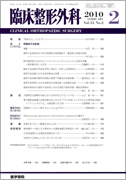1) Ayyoub M, Stevanovic S, Sahin U, et al:Proteasome-assisted identification of a SSX-2-derived epitope recognized by tumor-reactive CTL infiltrating metastatic melanoma. J Immunol 168:1717-1722, 2002
2) Bricard G, Bouzourene H, Martinet O, et al:Naturally acquired MAGE-A10- and SSX-2-specific CD8+T cell responses in patients with hepatocellular carcinoma. J Immunol174:1709-1716, 2005
3) Bruijn DRH, Santos NR, Kater-Baats E, et al:The cancer-related protein SSX2 interacts with the human homologue of a Ras-like GTPase interactor, RAB31P, and a novel nuclear protein, SSX21P. Genes Chromosomes Cancer 34:285-298, 2002
4) Clark J, Rocques PJ, Crew AJ, et al:Identification of novel genes, SYT and SSX, involved in the t (X;18) (p11.2;q11.2) translocation found in human synovial sarcoma. Nat Genet 7:502-508, 1994
5) Crew AJ, Clark J, Fisher C, et al:Fusion of SYT to two genes, SSX1 and SSX2, encoding proteins with homology to the Kruppel-associated box in human synovial sarcoma. EMBO J 14:2333-2340, 1995
6) Dos Santos NR, Torensma R, de Vries TJ, et al:Heterogeneous expression of the SSX cancer/testis antigens in human melanoma lesions and cell lines. Cancer Res 60:1654-1662, 2000
7) Gure AO, Wei IJ, Old LJ, et al:The SSX gene family:characterization of 9 complete genes. Int J Cancer 101:448-453, 2002
2402 anchor substitute. J Immunol 173:1436-1443, 2004
9) Kato H, Tjernberg A, Zhang W, et al:SYT associates with human SNF/SWI complexes and the C-terminal region of its fusion partner SSX1 targets histones. J Biol Chem 277:5498-505, 2002
10) Ladanyi M, Antonescu CR, Leung DH, et al:Impact of SYT-SSX fusion type on the clinical behavior of synovial sarcoma:a multi-institutional retrospective study of 243 patients. Cancer Res 62:135-140, 2002
11) Lik FL, Soulez M, Koczan D, et al:A KRAB-related domain and a novel transcription repression domain in proteins encoded by SSX genes that are disrupted in human sarcomas. Oncogene 17:2013-2018, 1998
12) Miettinen M, Virtanen I:Synovial sarcoma. a misnomer. Am J Pathol 117:18-25, 1984
13) Nagai M, Tanaka S, Tsuda M, et al:Analysis of transforming activity of human synovial sarcoma-associated chimeric portion SYT-SSX bound to chromatin remodeling factor hBRN/hSNF2 alpha. Proc Natl Acad Sci USA 98:3843-3848, 2001
14) Naka N, Araki N, Nakanishi H, et al:Expression of SSX genes in human osteosarcomas. Int J Cancer 98:640-642, 2002
15) Naka N, Joyama S, Tsukamoto Y, et al:Quantification of SSX mRNA expression in human bone and soft tissue tumors using nucleic acid sequence-based amplification. J Mol Diagn 7:187-197, 2005
16) Okeu MF, Despa S, Choroszy M, et al:Synovial sarcoma in children and adolescents:thirty three years of experience with multimodal therapy. Med Pediatr Oncol 37:90-96, 2001
17) Skytting B, Nilsson G, Brodin B, et al:A novel fusion gene, SYT-SSX4, in synovial sarcoma. J Natl Cancer Inst 91:974-975, 1999
18) Soulez M, Saurin AJ, Freemont PS:SSX and the synovial-sarcoma-specific chimaeric protein SYT-SSX co-localize with the human Polycomb group complex. Oncogene 18:2739-2746, 1999
19) Takenaka S, Ueda T, Naka N, et al:Prognostic implication of SYT-SSX fusion type in synovial sarcoma:a multi-institutional retrospective analysis in Japan. Oncol Rep 19:467-476, 2008
20) Turc-Carel C, Dal Cin P, Limon J, et al:Translocation X;18 in synovial sarcoma. Cancer Genet Cytogenet 23:93, 1986
21) Tureci O, Sahin U, Schobert I, et al:The SSX-2 gene, which is involved in the t (X:18) translocation of synovial sarcomas, codes for the human tumor antigen HOM-MEL-40. Cancer Res 56:4766-4772, 1996
22) Tureci O, Chen YT, Sahin U, et al:Expression of SSX genes in human tumors. Int J Cancer 77:19-23, 1998

